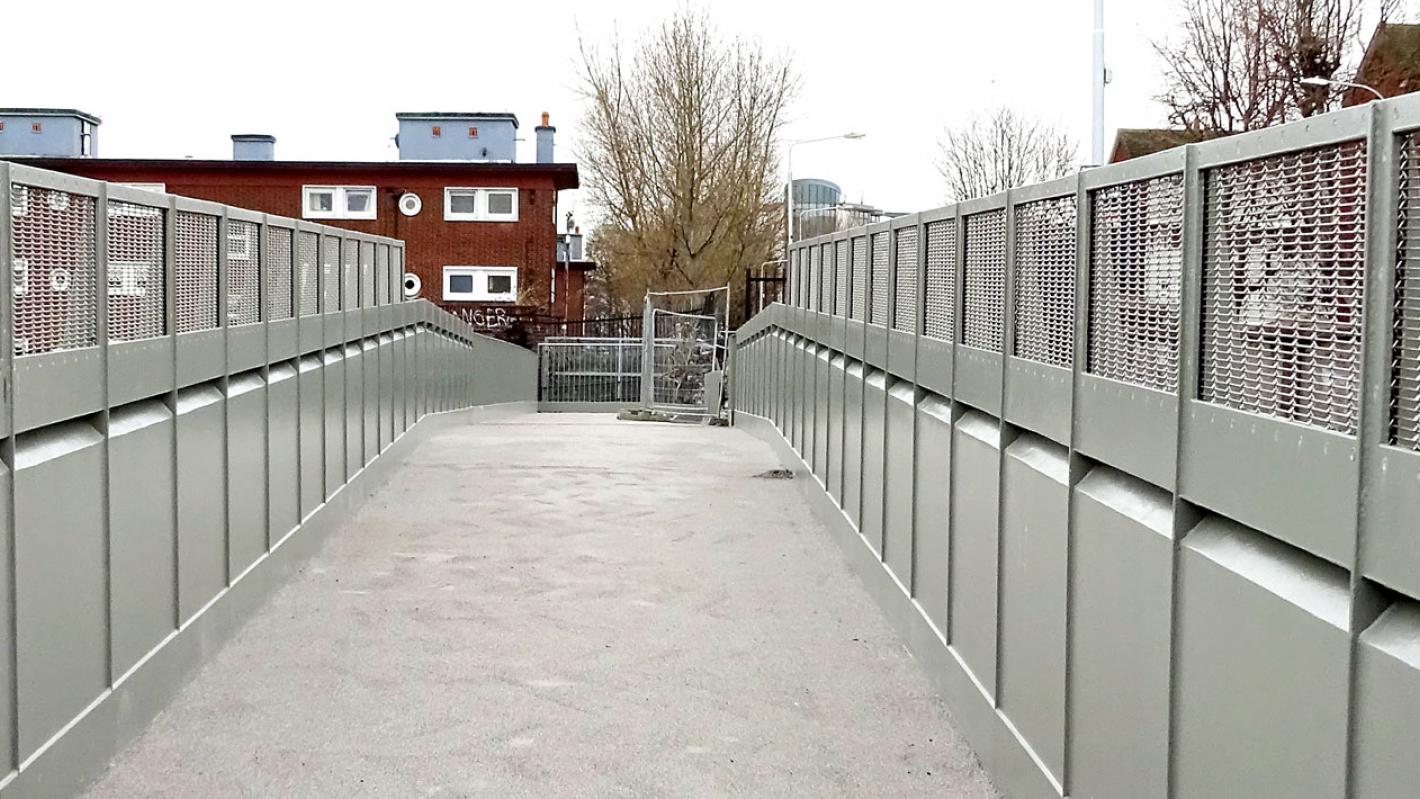
Newcomen Bridge, North Strand Road Cycle Route, Dublin, Ireland.
Newcomen Footbridge provides improved facilities for cyclists and pedestrians on Dublin’s North Strand Road
With the opening of Newcomen footbridge on Dublin’s North Strand Road, Dublin City Council’s plan to improve conditions for cyclists and walkers in Dublin city moved another step forward.
The new footbridge is located to the east of the existing Newcomen Road Bridge and crosses over both the Docklands Railway Line and the Royal Canal.
It provides an independent route for walkers across the canal, thereby leaving more space for cyclists on the adjacent Newcomen Road Bridge.
The bridge forms a critical link in the future North Strand Road Cycle Route and Royal Canal Orbital Cycle Route.
It signals the council’s ongoing commitment to reinvigorating the north inner-city through increased public transport provision and a greater focus on walking and cycle routes.
A design team comprising Roughan & O’Donovan, Grafton Architects, Kevin Cleary Lighting and Blackwood Associates Architects delivered the bridge solution.
Their aim, according to Roughan & O’Donovan’s Andrew O’Connell, was ‘to produce a simple yet effective design which would facilitate the segregation of pedestrians and cyclists at this future pinch point in the cycle network.’
The team worked closely with Dublin City Council, Irish Rail and Waterways Ireland to ensure the solution complemented the railway environment and created a safe space for pedestrians crossing the canal and railway.
The structure comprises a 31m span half-through steel bridge ‘main span’ running parallel to the existing Newcomen Road Bridge and a ‘link span’ sitting on a series of 4 piers that provides an easy transition for pedestrians from the main span to the existing adjacent footpath.
Construction took place over a 9-month period, with the bridge itself fabricated off-site in Carlow. It was then transported to the city and lifted into position during a single overnight possession of the railway underneath.
The Newcomen Cycle Bridge project was recently shortlisted for an ACEI 2018 Design Excellence Award.
